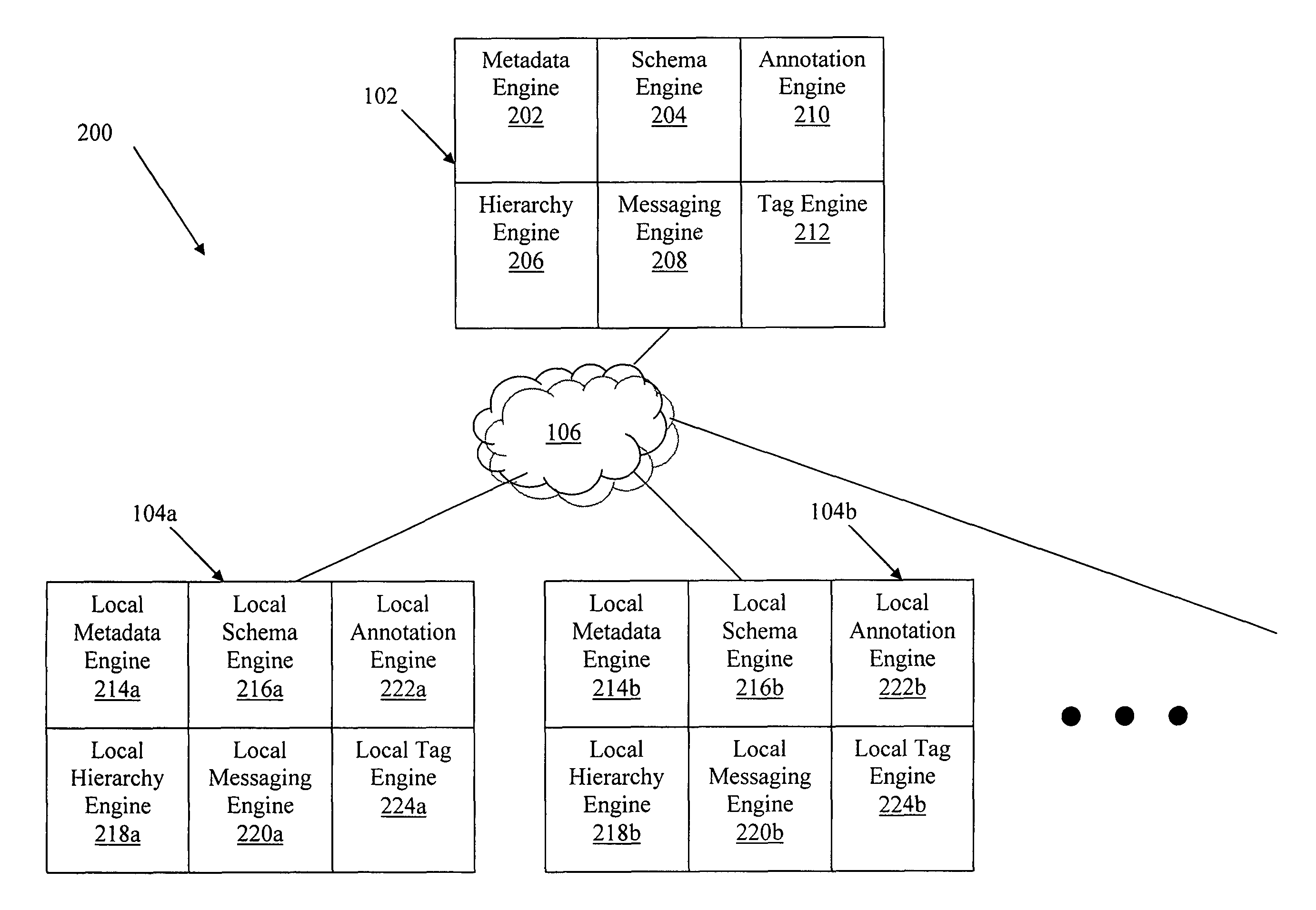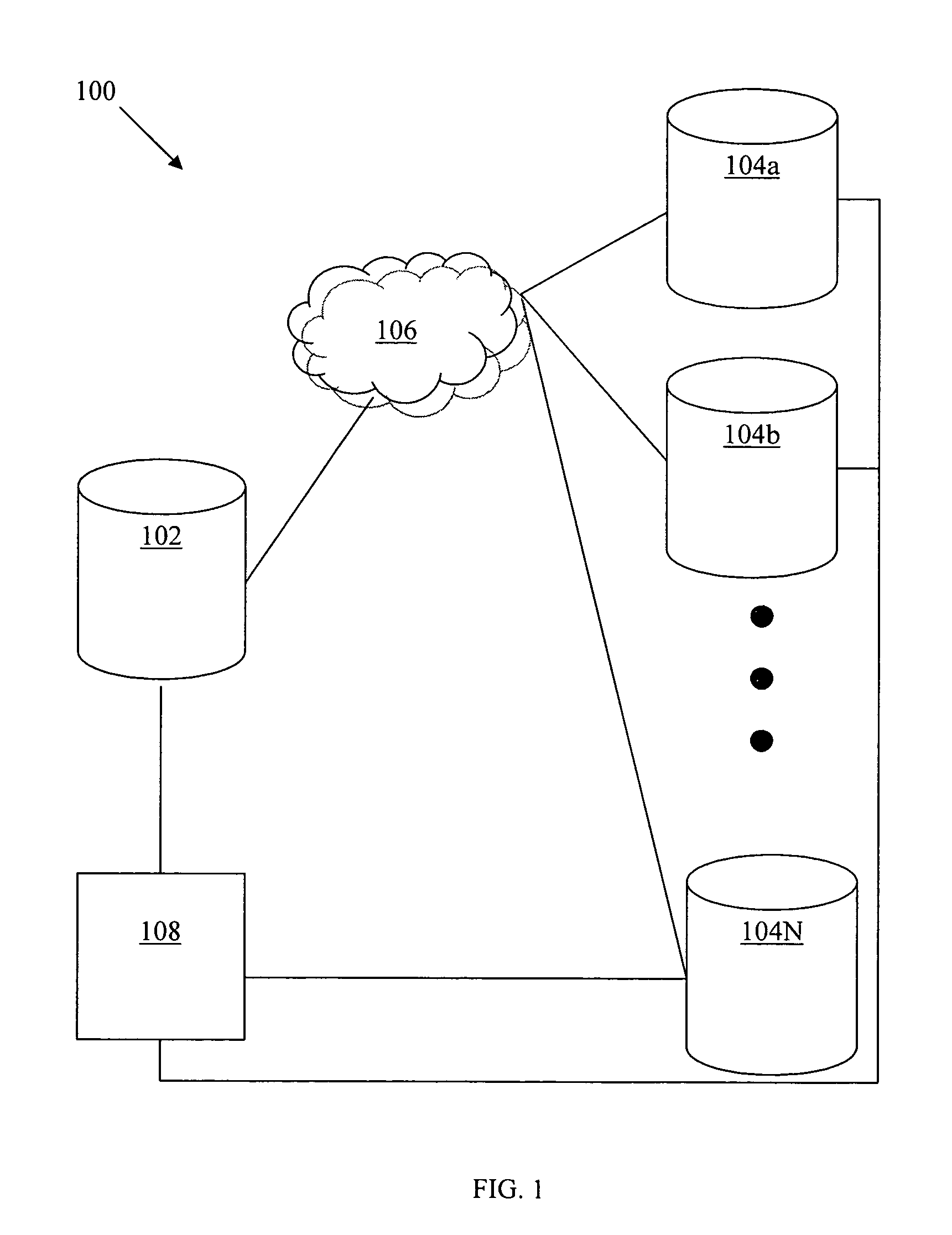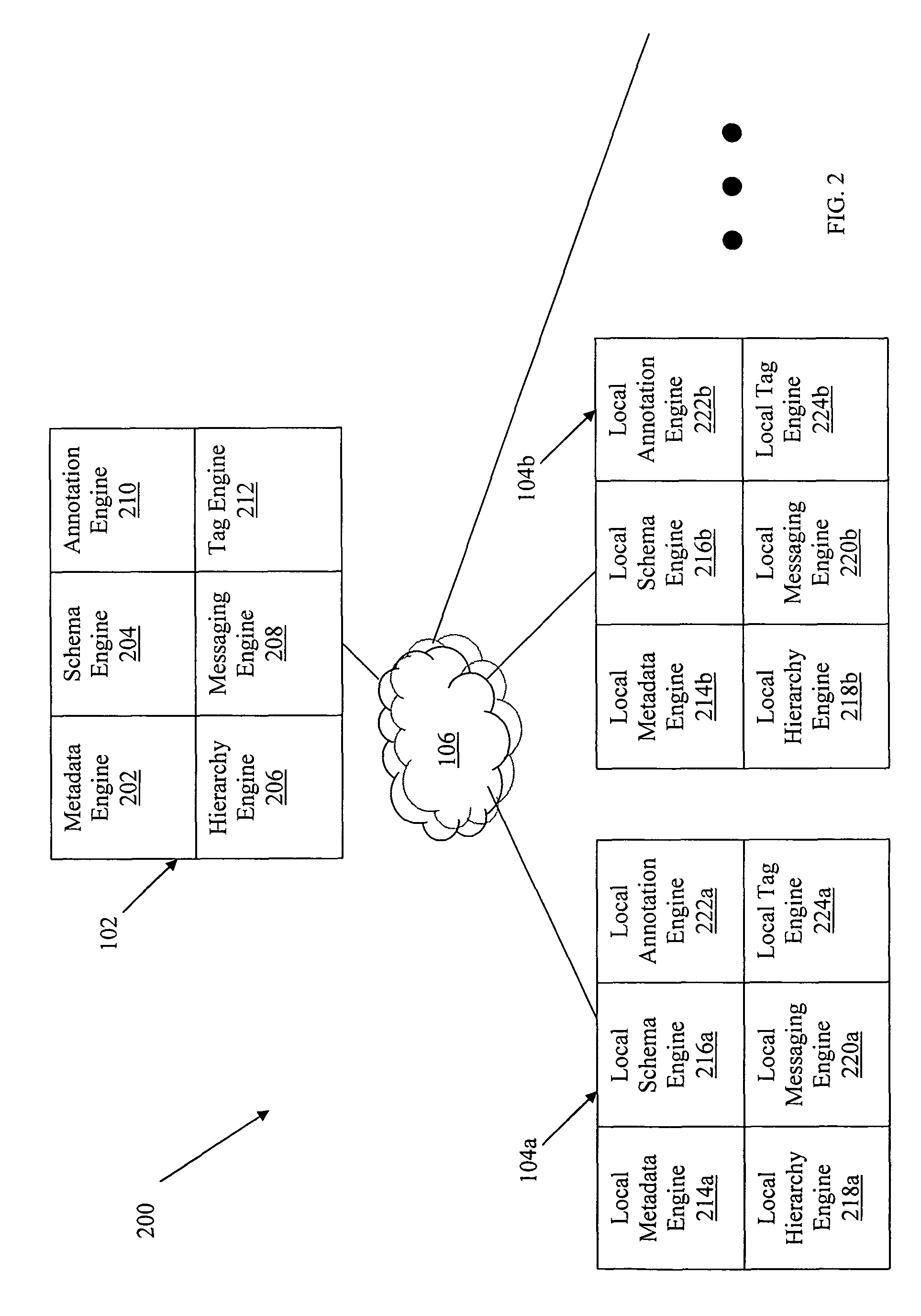Collaborative data and knowledge integration
a technology of knowledge integration and collaborative data, applied in the field of collaborative information systems, can solve the problems of limited collaboration between data providers and users, increased and researchers not located at the same site, and achieve the effect of researchers, increasing the number of researchers, and increasing the complexity of biomedical problems
- Summary
- Abstract
- Description
- Claims
- Application Information
AI Technical Summary
Benefits of technology
Problems solved by technology
Method used
Image
Examples
Embodiment Construction
[0016]The present invention generally provides methods and apparatus for a Web-based collaboration platform. A collaborative information integration platform enables sharing and co-authoring of schemas to achieve agreement on common data structures and semantics. It also facilitates collaborative tagging of data to improve search and personal organization of data through adding free tags or semantic tags. Users of a collaborative information integration platform may collaboratively review and analyze data to help improve the quality of data and experiments. The collaborative information integration platform also enables collaborative authoring of data to generate complete results and collaborative annotating of images with a Web-based tool to support collaborative annotation from multiple users. Additionally, personalized message exchange within the collaborative information integration platform keeps users updated on changes, activities, or related operations, and links users toget...
PUM
 Login to View More
Login to View More Abstract
Description
Claims
Application Information
 Login to View More
Login to View More - R&D
- Intellectual Property
- Life Sciences
- Materials
- Tech Scout
- Unparalleled Data Quality
- Higher Quality Content
- 60% Fewer Hallucinations
Browse by: Latest US Patents, China's latest patents, Technical Efficacy Thesaurus, Application Domain, Technology Topic, Popular Technical Reports.
© 2025 PatSnap. All rights reserved.Legal|Privacy policy|Modern Slavery Act Transparency Statement|Sitemap|About US| Contact US: help@patsnap.com



